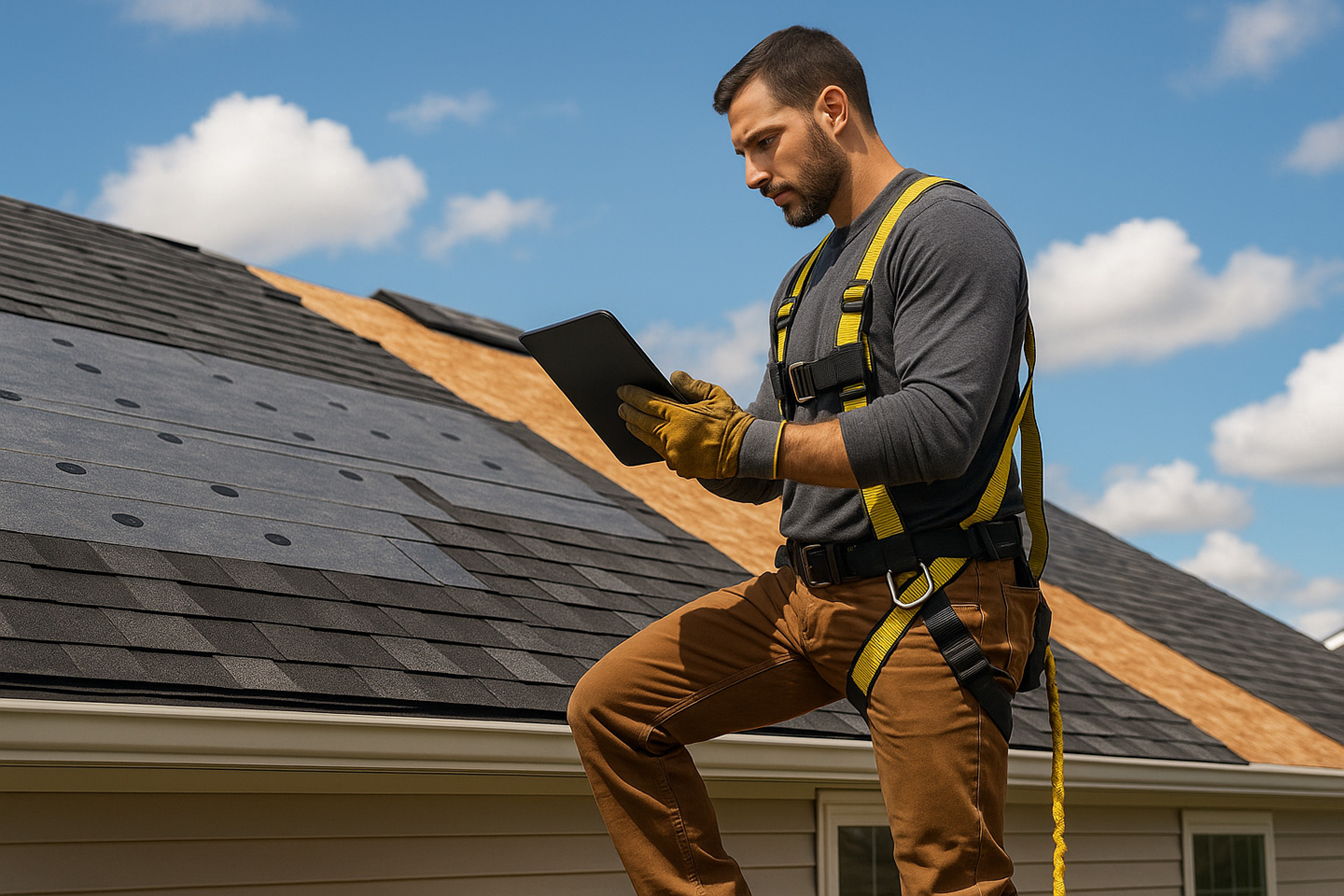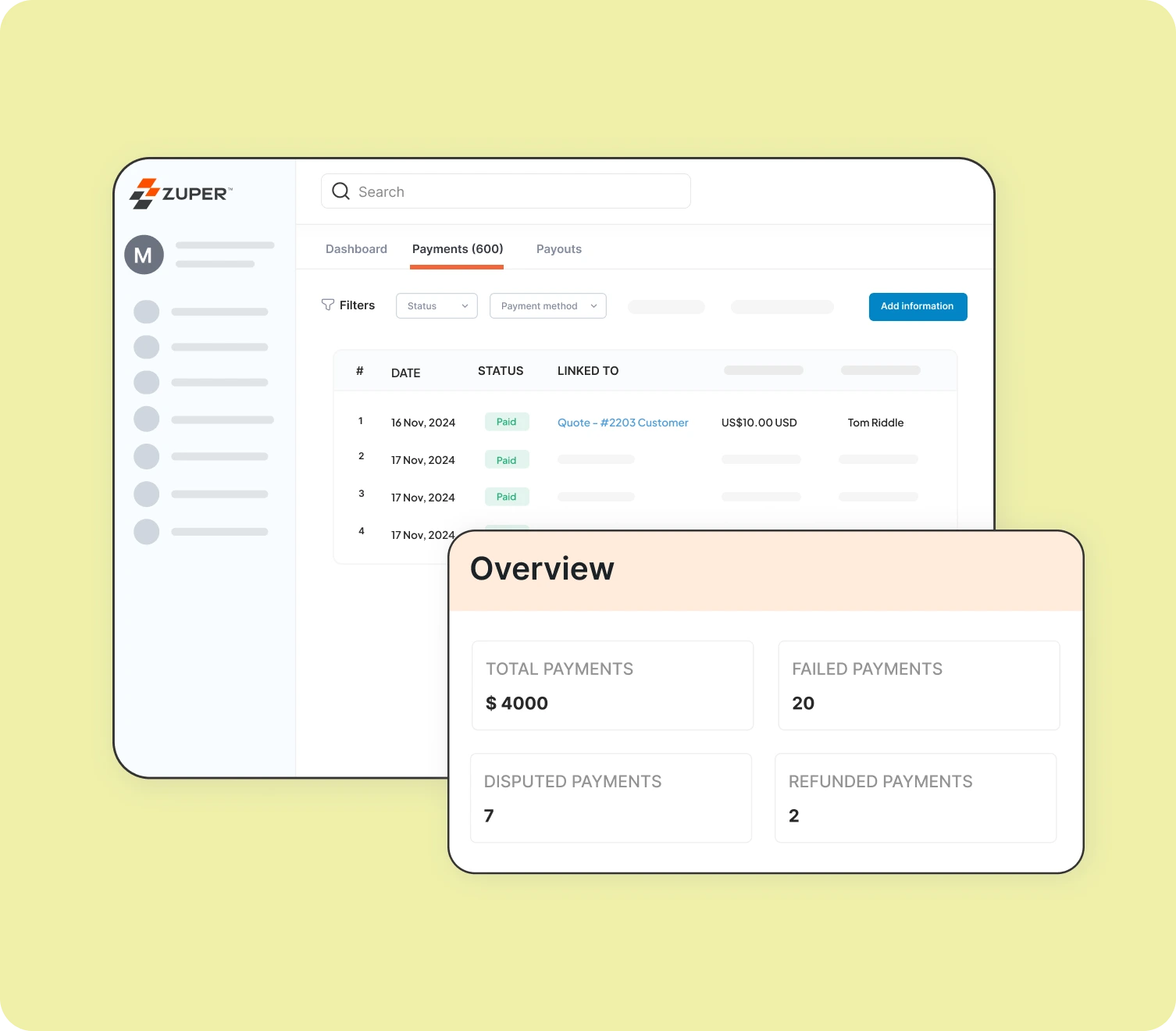If roofing feels tougher now than it did five years ago, you’re not imagining it—the game really has changed. Roofing has become a data-driven, energy-efficient, tech-integrated craft. From eco-conscious materials to drones and smart sensors, the roof over your head is getting a serious upgrade!
The truth? Contractors who lean into tech—whether it’s drones, solar shingles, or software that tames the paperwork—are getting ahead, while old-school operators are stuck chasing. Here’s what that means for the industry, and why those embracing tech are leading the pack.
New Materials That Save Energy, Win Bids, and Keep Clients Talking
Clients today don’t just want a roof that keeps water out—they want one that cuts utility bills, adds curb appeal, and even generates power.
Solar shingles & integrated PV systems
Forget the bolt-on solar panels of yesterday. In 2026, solar shingles and photovoltaic (PV) tiles are blending right into roof designs. Companies like GAF Energy and Tesla have made these products more accessible, and demand is rising fast. According to the International Energy Agency, solar PV will make up about 80% of renewable capacity growth worldwide through 2030. That’s a massive tailwind for roofers who can offer integrated solar options.
Cool roofs & reflective coatings
If you’ve ever roofed in Texas, Arizona, or Florida, you know how punishing the heat can be—not just for crews, but for building owners’ cooling bills. Cool roofing reflects sunlight instead of absorbing it, saving up to $0.20 per square foot annually on commercial roofs, according to Lawrence Berkeley National Lab. On homes, the Department of Energy says reflective shingles in warm regions can save about $0.50 per square foot over their lifetime. Put simply, these products aren’t just eco-friendly—they’re deal-closers in hot markets.
Recycled, bio-based & green roofing
From rubber made out of old tires to algae-based membranes, recycled and bio-based products are reshaping the material market. And in dense cities, green roofs are gaining traction because they do more than look nice—they retain about 50% of annual rainfall, reducing stormwater fees and easing flood risks (EPA data). If you’re bidding in urban markets, being able to offer green or recycled options sets you apart instantly.
Drones, Sensors, and Smarter Inspections: Stop Guessing, Start Knowing
How many times have you risked life and limb climbing a sketchy ladder just to confirm what you already suspected—a leak, a crack, or loose flashing? There’s a better way.
Drone inspections. The FAA reports there are now more than 460,000 certified remote pilots in the U.S., and drones are quickly becoming standard gear. With thermal cameras and photogrammetry, you can find wet insulation or heat loss without even stepping on the roof. Of course, better inspections only matter if your estimates reflect the real numbers. If you’re worried about mistakes eating into your margins, check out our guide on how to improve roof estimate accuracy.
Sensor-enabled roofs. Some contractors are going even further by embedding sensors under membranes or substrates. These tiny devices track moisture and temperature changes in real time. If something goes wrong, you don’t find out after the drywall is ruined—you get an alert before the damage spreads. Think of it as preventive maintenance built into the roof itself.
3D printing & custom parts. We’ve all had jobs stall because a weird flashing or vent adapter wasn’t in stock. 3D printing is starting to solve that problem by letting teams produce small, custom components on-site. That means less waiting, less improvising, and more productive crews.
Paperwork, Delays, and Miscommunication? Here’s the Fix
If you’re honest, how much of your time goes into roofing, and how much into chasing paperwork, fielding calls, and cleaning up miscommunications? For most contractors, it’s not even close. The operational drag is real.
Project management & CRM platforms
The good news is that roofing companies are ditching the clipboards and pieced-together apps. Instead, they’re centralizing job schedules, photos, estimates, and insurance paperwork in one platform for roofing management. That means no more “Did you get my text?” or “I thought the crew was there yesterday.” Everything is in one place, visible in real time. One of the easiest wins is choosing the right software to handle scheduling and dispatch. We break down what to look for in roofing scheduling software for contractors, so you can avoid tools that create more headaches than they solve.
Connected workflows
When scheduling, truck stock, and invoicing are linked, you cut downtime. No more “We’ll come back next week when the part’s in.” Systems like Zuper are designed to connect estimates, inventory, checklists, and invoices into one smooth workflow—helping roofers get paid faster and crews spend less time waiting around.
Dashboards & process discipline
Tech-savvy roofers aren’t just using software—they’re running their business like a playbook. With dashboards showing call-backs, backlogs, and profitability per crew, managers can make adjustments early instead of reacting too late. This kind of operational discipline builds long-term resilience that competitors can’t just copy.
Your Crew Wants to Learn
Labor shortages aren’t news to anyone in roofing. Finding skilled installers is tough, and once you do, you’ve got to keep them trained on codes, warranties, and new products.
Younger roofers expect mobile learning. Instead of sending them to a two-day seminar, you can get them certified on safety, adhesives, or solar installs through online modules. Manufacturers and trade groups are building robust learning libraries that can be accessed anytime, which keeps crews sharp without killing productivity.
We’ve all been stuck waiting on an adjuster or GC to weigh in before a project can move forward. Now, roofers are using live video calls, shared cloud photos, and site-sharing platforms to resolve questions instantly. That means fewer delays, faster closeouts, and happier clients.
The Gap Is Growing: Why Tech-Forward Roofers Keep Winning Jobs
Here’s the hard truth: the contractors embracing tech are winning bigger contracts and higher margins, while everyone else is left fighting over scraps.
- They’re safer. Construction still accounts for nearly one in five U.S. workplace deaths, with 38% caused by falls (OSHA). Drones and digital safety checklists aren’t just nice add-ons—they’re lifesavers that cut hours of risky work at height.
- They’re more profitable. Data shows cool roofs can save building owners up to $1.4 billion annually in energy costs nationwide. When you can quantify ROI per square foot, you stop competing on price and start competing on value. If you want to benchmark where you stand, here’s a breakdown of average profit margins in roofing and what the top performers are doing differently
- They’re more trusted. Transparent tracking, fast updates, and modern offerings like solar or green roofing don’t just win jobs—they win repeat customers.
The gap isn’t closing—it’s widening. And the longer you wait to catch up, the harder it’ll be.
Quick Cheat Sheet: What’s Worth Your Time (and What’s Not)
| Technology / Tool | Why It Matters for You |
| Drone inspections | Safer, faster, more detailed than climbing roofs |
| Solar shingles / integrated PV | Generate energy, boost curb appeal, stay future-proof |
| Cool roof coatings | Cut cooling bills, help clients beat heat costs |
| Project management software | Kill the paperwork chaos, boost margins |
| CRM & workflow tools | Keep scheduling, inventory, and invoicing in sync |
| Online training platforms | Upskill crews without pulling them off jobs |
| Moisture/temperature sensors | Stop leaks before they wreck the inside |
The Bottom Line
Roofers who treat technology as a core part of their business, not a side benefit are winning bigger contracts, earning customer trust, and future-proofing their operations. The roofing industry is evolving fast, and the leaders of 2026 won’t just be on rooftops—they’ll be on the cloud, in the data, and ahead of the curve. If you’re ready to take the next step, here’s a practical guide on how to scale a roofing business without burning out your crews or drowning in admin.





